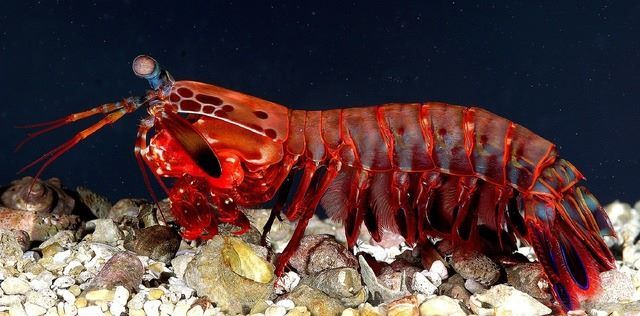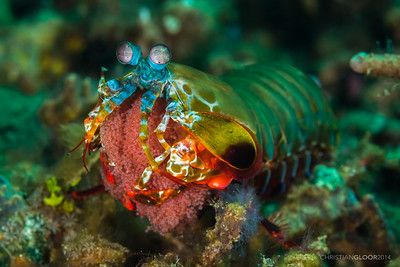Nature’s Nanostructures Are Shaping Polymer Manufacturing
What if the next leap in nanotechnology was already hiding in nature’s toolbox?

The mantis shrimp—a seemingly unremarkable marine crustacean—can strike with the force of a bullet. Its club-like appendage moves so fast it creates cavitation bubbles and can shatter aquarium glass. But what truly fascinates material scientists is the shrimp’s remarkable exoskeleton, which is strong enough to survive these explosive blows unscathed.
What value would polymer manufacturers create if they could capture some of the mantis shrimp’s clever design in their products?

This question may soon be answered as researchers from America’s National Institute of Standards and Technology (NIST) have now taken a significant step forward by mimicking this biological nanostructure to create new synthetic materials with unprecedented impact resistance. Their innovation, grounded in bioinspired nanotechnology, could soon revolutionise how we design protective polymers and composite materials.
Nanotechnology Lessons from the Mantis Shrimp
To make the breakthrough, the NIST team focused on the Bouligand structure—a helicoidal, twisted plywood-like architecture found in the mantis shrimp’s club. This hierarchical nanostructure redirects and dissipates mechanical stress across layers of fibrils, preventing cracks from forming and spreading.
“Bouligand structures are a universal material platform for impact resistance in nature,” says Edwin Chan, a NIST materials research engineer and the study’s lead author. “We wanted to learn more about them, so we produced and tested them in the lab.”
By replicating this arrangement using cellulose nanocrystals, researchers were able to develop a material that not only absorbs mechanical shocks but also recovers without permanent deformation. This is a pivotal advance in polymer nanotechnology—designing materials at the nanoscale to achieve macroscale performance.

The nanomaterial researchers have now published their findings in the June 2025 edition of Proceedings of the National Academy of Sciences, where they explain how slight variations in helical pitch and film thickness of these nanostructured materials can be tuned to provide polymers with exceptional strength, relatively low density, and high impact resistance.
It is a discovery which the researchers describe as “a promising strategy for the future design of impact-resistant materials.”
While challenges remain—such as producing the intricate nanostructures at commercial scale and managing environmental stability—the discovery is further proof of how modifying polymers at the nanoscale can have a profound impact on a bulk, wholesale polymer composite.
Related articles: Nanofibres Boost Carbon Composites’ Strength and Value or The 101 on Nanoclay-Enhanced Polymers
This could lead to advanced polymer products for the aerospace, automotive, sports, and defence sectors—all using scalable nanofabrication methods. The nanotechnology could also be applied to create protective coatings, flexible barriers, or to form internal nano-layers which could dampen and scatter incoming energy.
“The results and insights of this research mark an important advance in bioinspired materials design with applications for aerospace, such as helping spacecraft survive the impact of micrometeoroids and protecting orbiting satellites that collide with debris,” says Chan.
Thanks to the way that materials function at the nanoscale and how they are able to impart their properties to materials at the macroscale, the properties that polymers can possess are only limited by imagination. As such, this work is more than biomimicry—it is functional nanotechnology inspired by evolution. And as researchers continue to decode the principles of natural nanostructures, we edge closer to materials that are not only tougher but also lighter, smarter, and more sustainable.
“These findings suggest that there are different ways to design materials to absorb impact,” notes Chan. “We can use this knowledge to create more resilient and longer-lasting materials.”

Nature has evolved impact-resistant structures over hundreds of millions of years. By studying and replicating them through the lens of nanotechnology, scientists are developing the next generation of high-performance, adaptable materials. For polymer researchers, engineers, and manufacturers, the message is clear: biology is not just a source of inspiration—it’s a blueprint for the future.
The research conducted at NIST is made by improving polymers with nanotechnology—similar to the work being carried out at POLYMER NANO CENTRUM. Based near Prague in the Czech Republic, POLYMER NANO CENTRUM (which hosts this website) has a research centre solely committed to innovating polymers to meet the needs of industry.
If you are interested in learning more about how polymers can be provided with bespoke solutions and unique selling points. Then contact +420 233 371 850, email info@polymernanocentrum.czor visit POLYMER NANO CENTRUM.

